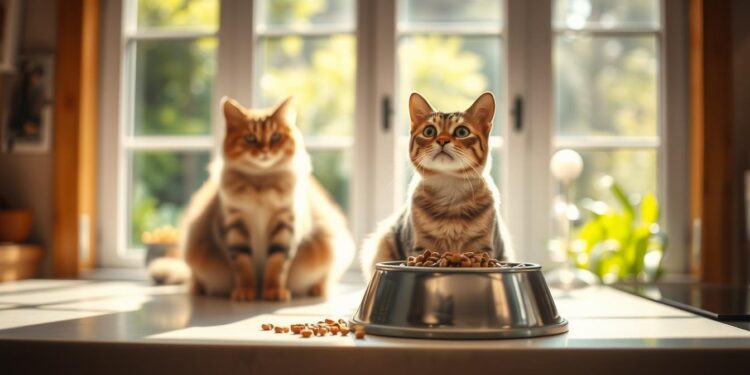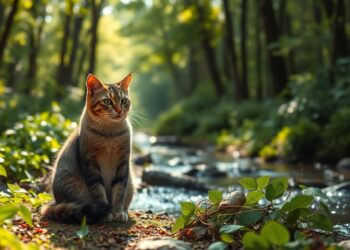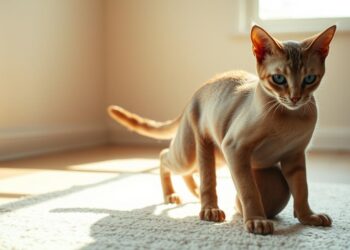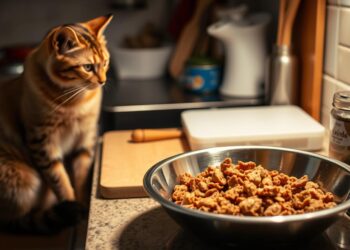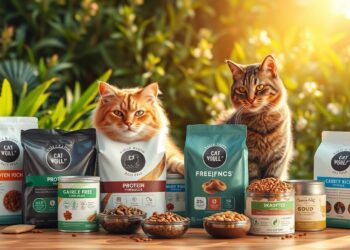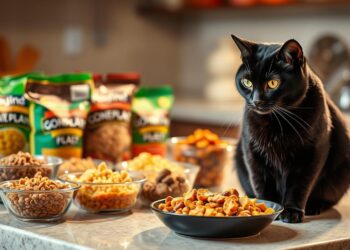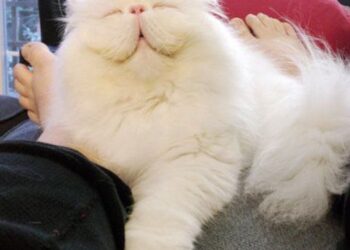Many cat owners face a common dilemma: how to provide their feline companions with a nutritious diet without breaking the bank. According to Pam Roussell’s article “Budget-Friendly Ways To Improve Your Cat’s Diet,” pet owners are seeking affordable ways to enhance their pet’s well-being. Making informed choices about a cat’s diet is crucial for their overall health.
Proper nutrition plays a vital role in maintaining a cat’s health. By understanding the importance of proper cat feeding, owners can make better decisions about their pet’s diet. This involves considering various factors, including the cat’s age, breed, and health conditions.
By following cat feeding guidelines for beginners, cat owners can ensure they are providing their pets with the necessary nutrients for optimal health.
Understanding Your Cat’s Nutritional Needs
Cats require a balanced diet that includes a mix of essential nutrients to thrive. A well-balanced diet is crucial for maintaining their overall health, supporting their immune system, and ensuring they lead active lives.
The Importance of a Balanced Diet
A balanced diet for cats is one that provides the right mix of proteins, fats, carbohydrates, vitamins, and minerals. Protein is particularly important as it helps build and repair tissues, including muscles, bones, and skin. Cats are obligate carnivores, meaning they require a diet rich in protein from animal sources.
A diet lacking in essential nutrients can lead to health issues. For instance, a deficiency in vitamin A can cause vision problems, while a lack of taurine can lead to heart disease. Therefore, it’s crucial to choose a cat food that is formulated to meet your cat’s nutritional needs.
Key Nutrients for Cats
Cats require a range of nutrients, including:
- High-quality protein from animal sources like chicken or fish
- Fats for energy and to support skin and coat health
- Certain vitamins and minerals, such as vitamin A and calcium, for overall health
- Taurine, an amino acid crucial for heart health
It’s also important to note that cats have different nutritional needs at various life stages. For example, kittens require more protein and calories than adult cats to support their growth and development.
Common Dietary Deficiencies
Some common dietary deficiencies in cats include a lack of essential fatty acids, vitamin D, and taurine. These deficiencies can lead to a range of health problems, from skin issues and poor coat condition to more serious conditions like heart disease.
To avoid these issues, cat owners should choose a high-quality cat food that is formulated to meet their cat’s nutritional needs. It’s also advisable to consult with a veterinarian to determine the best diet for your cat based on their age, health, and lifestyle.
Types of Cat Food: Dry vs. Wet
Understanding the differences between dry and wet cat food is crucial for making informed decisions about your cat’s diet. Both types have their unique benefits and drawbacks, and the right choice depends on your cat’s individual needs, lifestyle, and health conditions.
Benefits of Dry Cat Food
Dry cat food, also known as kibble, is a popular choice among cat owners due to its convenience and dental benefits. It helps reduce tartar and plaque, promoting healthier teeth and gums. Additionally, dry cat food is generally more cost-effective and has a longer shelf life compared to wet cat food.
Key advantages of dry cat food include:
- Convenience in storage and serving
- Dental health benefits
- Cost-effectiveness
- Variety in formulations for different life stages and lifestyles
Benefits of Wet Cat Food
Wet cat food is known for its high moisture content, which can be beneficial for cats’ urinary health and overall hydration. It often contains fewer carbohydrates and more protein compared to dry cat food, making it a good option for cats with dietary restrictions or preferences.
Key benefits of wet cat food include:
- Higher moisture content for better hydration
- Often lower in carbohydrates
- Can be more palatable for cats
- Variety in flavors and textures
Choosing the Right Consistency
Deciding between dry and wet cat food, or a combination of both, depends on your cat’s specific needs. Factors to consider include age, health status, and personal preference. Some cats thrive on a mixed diet, benefiting from the convenience of dry food and the hydration of wet food.
Consider the following when choosing the right consistency:
| Cat’s Life Stage | Dry Food | Wet Food |
|---|---|---|
| Kittens | High-energy kibble for growth | High-protein wet food for development |
| Adult Cats | Maintenance kibble for daily nutrition | Variety packs for palatability and hydration |
| Senior Cats | Easy-to-digest kibble for joint health | Lower-calorie wet food for weight management |
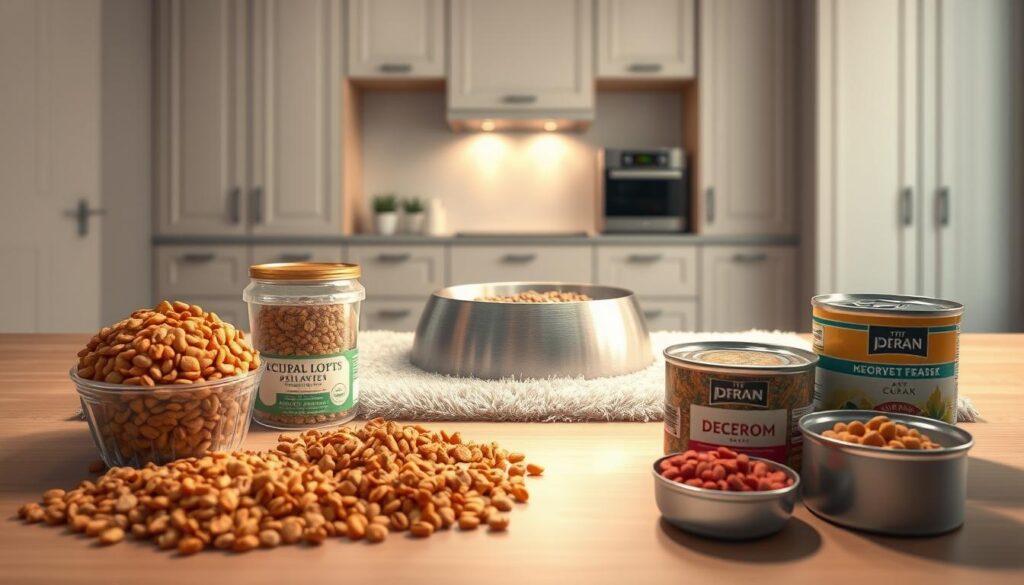
Ultimately, the best choice between dry and wet cat food, or a mix of both, should be based on your cat’s individual needs, preferences, and health status. Consulting with a veterinarian can provide personalized recommendations tailored to your cat’s specific requirements.
Reading Cat Food Labels
Decoding cat food labels is a vital skill for cat owners who want to ensure they’re providing the best possible nutrition for their pets. With so many options available, understanding what’s in the food is crucial for making informed dietary choices.
Understanding Ingredients Lists
The ingredients list on cat food labels can be daunting, but it’s a critical component in determining the quality of the food. Ingredients are listed in order of their prevalence by weight, so it’s essential to look for high-quality protein sources at the top of the list.
- Look for named protein sources like chicken or salmon.
- Avoid generic terms like “meat” or “by-products.”
- Be wary of fillers like corn or wheat.
Nutritional AAFCO Guidelines
The Association of American Feed Control Officials (AAFCO) sets standards for cat food nutrition. AAFCO guidelines ensure that cat foods meet certain nutritional requirements. When reading labels, look for compliance with AAFCO standards.
AAFCO guidelines cover various life stages, including kittens, adults, and seniors. Ensuring the food meets your cat’s life stage is vital for their nutritional needs.
Identifying Quality Sources
Identifying quality sources in cat food involves more than just looking at the ingredients list. It’s about understanding the manufacturer’s reputation, production practices, and commitment to nutritional research.
- Research the brand’s history and reputation.
- Check for recalls and customer reviews.
- Look for certifications from reputable third-party organizations.
By following these guidelines, cat owners can make more informed choices about their cat’s diet, ensuring they receive the best possible nutrition.
Budget-Friendly Cat Food Options
Budget-friendly cat food options are plentiful, and with a little research, you can find the perfect fit for your pet. Providing your cat with nutritious food is essential, and there are several ways to do this without overspending.
Economical Brands Worth Considering
Several cat food brands offer high-quality products at affordable prices. Some of these include:
- Purina Cat Chow: Known for its balanced nutrition and affordability.
- Friskies: Offers a range of flavors and is budget-friendly.
- 9Lives: Provides nutritious options at a lower price point.
These brands are widely available and can be found in most pet stores or online.
Tips for Buying Cat Food in Bulk
Buying cat food in bulk can save you money in the long run. Here are some tips:
- Check the expiration dates to ensure the food remains fresh.
- Consider your cat’s preferences and dietary needs.
- Store the food properly to maintain its quality.
Buying in bulk is especially beneficial if you have multiple cats or a cat with a large appetite.
Utilizing Coupons and Discounts
Coupons and discounts can significantly reduce your cat food expenses. Here’s how to make the most of them:
- Sign up for newsletters from your favorite pet food brands to receive exclusive offers.
- Follow pet food brands on social media for promotions.
- Use coupon websites or apps that specialize in pet supplies.
By combining these strategies, you can provide your cat with quality food while staying within your budget.
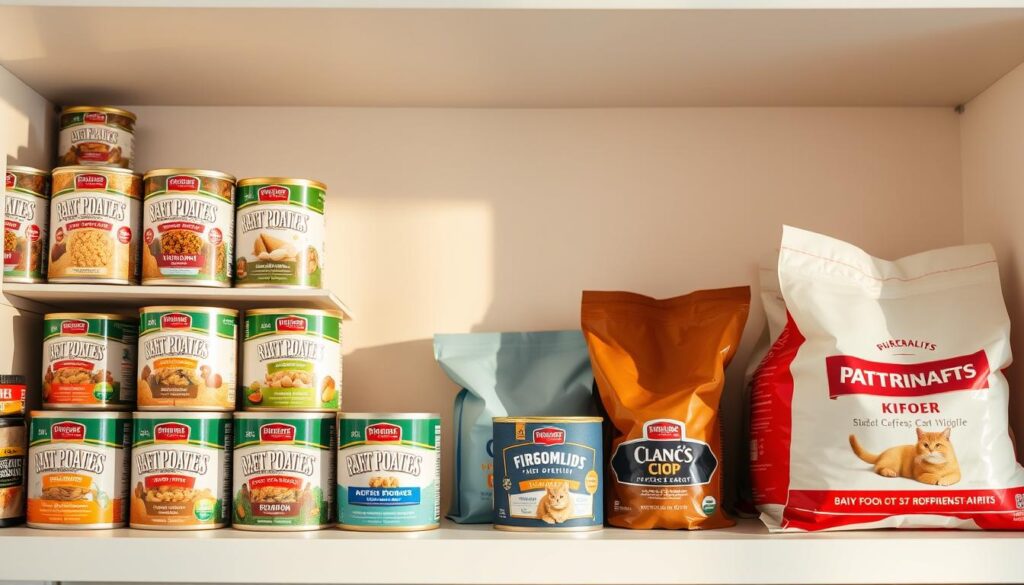
Homemade Cat Food: Pros and Cons
For cat owners who want to take a more hands-on approach to their pet’s nutrition, homemade cat food is an attractive option. Preparing meals for your cat can be a great way to ensure they are getting the nutrients they need, but it’s crucial to understand the pros and cons.
The primary advantage of homemade cat food is the ability to control the ingredients, allowing owners to avoid preservatives and additives found in commercial foods. This can be particularly beneficial for cats with food sensitivities or allergies.
Essential Ingredients for Homemade Meals
When preparing homemade cat food, it’s essential to include a balance of protein sources, fats, carbohydrates, vitamins, and minerals. High-quality protein sources such as chicken, salmon, or beef should be the main ingredient.
- Protein sources: chicken, beef, fish
- Fats: salmon oil, coconut oil
- Carbohydrates: sweet potatoes, green beans
- Vitamins and minerals: supplements or whole foods
A well-balanced recipe might include a mix of these ingredients. For example, a simple recipe could involve cooking chicken, adding steamed vegetables, and including a source of healthy fat like salmon oil.
Safety and Nutritional Balance
One of the significant challenges of homemade cat food is achieving nutritional balance. Cats have specific dietary needs that must be met to prevent deficiencies or excesses. Consulting a veterinarian or a certified animal nutritionist can help ensure that your cat’s homemade diet is complete and balanced.
| Nutrient | Function | Sources |
|---|---|---|
| Protein | Builds and repairs tissues | Chicken, beef, fish |
| Omega-3 Fatty Acids | Supports skin and coat health | Salmon oil, flaxseed |
| Vitamin E | Antioxidant | Vegetable oils, nuts |
Consulting with a Vet
Before making any significant changes to your cat’s diet, it’s crucial to consult with a veterinarian. They can provide guidance on creating a balanced diet that meets your cat’s specific needs, based on factors like age, health status, and lifestyle.
By understanding the pros and cons of homemade cat food and taking steps to ensure nutritional balance, cat owners can provide their pets with a healthy, tailored diet.
Feeding Guidelines by Cat Age
The nutritional needs of cats change as they age, requiring adjustments in their feeding guidelines. Providing the right nutrients at each life stage is crucial for maintaining their overall health and wellbeing.
Kittens: Nutritional Requirements
Kittens require a diet rich in protein and calories to support their rapid growth and development. Nutritionally balanced kitten food should be fed to them multiple times a day. It’s essential to choose a high-quality kitten food that meets the AAFCO guidelines for kitten nutrition.
- High-protein diet to support muscle growth
- Adequate calories for energy and development
- Essential vitamins and minerals for overall health
Adult Cats: Maintaining Weight
Adult cats require a balanced diet that maintains their weight and supports their overall health. Portion control is key to preventing obesity, a common issue in adult cats. The feeding schedule should be consistent, with measured portions to avoid overfeeding.
- Monitor food intake to prevent overeating
- Choose adult cat food that is balanced and nutrient-rich
- Avoid frequent treats that can lead to weight gain
Senior Cats: Special Considerations
Senior cats have different nutritional needs, often requiring fewer calories but more support for joint health and digestion. Senior cat food formulas are designed to address these needs, with ingredients that support joint health and are easier to digest.
Adjusting a cat’s diet according to their age is a critical aspect of responsible pet ownership. By understanding and meeting the nutritional needs at each life stage, cat owners can help ensure their pets lead healthy, happy lives.
Common Cat Feeding Mistakes
Many cat owners are unaware of the common mistakes they make when feeding their feline friends. These mistakes can lead to a range of health issues, from obesity to nutritional deficiencies. Understanding these pitfalls is crucial for providing your cat with the best possible care.
Overfeeding: Pitfalls and Solutions
Overfeeding is one of the most common cat feeding mistakes. It can lead to obesity, which increases the risk of diabetes, arthritis, and heart disease. To avoid overfeeding, it’s essential to measure your cat’s food portions accurately and limit treats. Consulting with your veterinarian can help determine the ideal weight and feeding schedule for your cat.
Ignoring Portion Control
Ignoring portion control is another significant mistake. Cats have different nutritional needs based on their age, size, and activity level. Using a measuring cup to portion out meals can help prevent overeating. It’s also crucial to adjust portions as your cat ages or changes activity levels.
Neglecting Fresh Water
Neglecting to provide fresh water is a critical oversight. Cats need access to clean, fresh water at all times to stay hydrated and maintain their overall health. Changing the water frequently and ensuring it’s easily accessible can encourage your cat to drink more.
By being aware of these common cat feeding mistakes and taking steps to avoid them, you can significantly improve your cat’s quality of life. Proper feeding practices not only enhance your cat’s health but also strengthen the bond between you and your pet.
Special Dietary Needs for Cats
tag, meets the specified requirements, and is written in American English.
Establishing a Routine for Feeding
A well-planned feeding schedule is crucial for maintaining your cat’s overall health and wellbeing. By establishing a routine, you can ensure that your cat’s nutritional needs are met, and reduce the risk of obesity and other health issues.
Benefits of a Structured Feeding Schedule
A feeding schedule for cats helps in maintaining a consistent weight and reduces the likelihood of overeating. It also allows cat owners to monitor their pet’s appetite and detect any potential health issues early on, which is an essential aspect of cat feeding guidelines.
Transitioning Between Foods
When switching your cat’s food, it’s essential to do so gradually to prevent digestive upset. Start by mixing a small amount of the new food with their current meal and gradually increase the proportion over several days.
Monitoring Health and Weight
Regular monitoring of your cat’s weight and overall health is vital. This includes checking their body condition score and adjusting their feeding schedule as needed. The importance of proper cat feeding cannot be overstated, as it directly impacts your cat’s quality of life.
